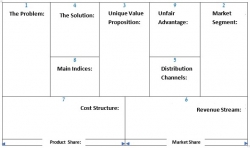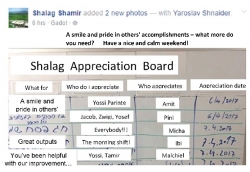A while ago, a COO at a certain company told me his CEO keeps calling his (the COO's) underlines to give them direct instructions, often contradicting the COO's plans and instructions. The COO would only discover this in retrospect, when he would check on progress.
When we brought the matter to the CEO, he claimed this enables him to increase his control in the company in order to improve performance, and he wasn’t aware of the damage done to the organization through these actions.
In another company, during my diagnosis time, I asked interviewees to draw the company's organizational structure. One VP drew the CEO with lines going to every employee. Another senior executive drew a large empty frame and said: "this is the organizational structure". The rest each drew a different diagram.
A similar picture of uncertainty and disorganization as to the division of responsibilities and authority could be found in many companies I worked with.
The CEO is in charge as far the law, the share-holders or the board of directors are concerned (meaning he's the one accountable). So he must ensure the company reaches its goals and targets, first and foremost profit and resiliency. Of course the CEO's instinct is, then, to be involved in everything, and try and personally lead all processes in the company.
On the other hand, in many cases the CEO isn’t up to date regarding what's happening in the company, and discovers one catastrophe or another with a great delay, often when it's too late to fix it.
How can a CEO ensure everything is running as it should, keep up to date, without undermining their VPs?
This is a critical issue, because when there is no clear division of responsibilities, the entire company is like a ship without a captain. Companies and organizations wishing to operate correctly and profitably should make sure that its division of responsibilities and authority is clear to all.
My Recommendations
- Role definition. First, it's important to have a clear definition of all roles, and especially CEO, VPs and junior management (team leaders, department heads, etc.). Every employee's authority derives from their responsibilities and the goals set to them.
- Goals. Once roles are defined and the division of responsibilities is clear, the CEO should set clear and measurable goals for managers and all other employees.
- Monitoring. The CEO should examine the results of all indicators compared to set goals at least once a month. If the situation is volatile, even once a week. When a problem, or a failure to meet goals, is discovered, the CEO can know exactly whose responsibility it is.
- Action. Every VP and department head should prepare and present an action plan according to their set goals, and to current performance. The plans are to be presented either in a one-on-one meeting with the CEO or in front of the management team.
This way CEOs can empower their employees, while not interfering with their management, and at the same time maintain full knowledge of progress and problems.
Safety and the Law
Finally, I'll mention that to the authorities, the CEO is responsible for employee safety and for a full adherence to the law (taxes, environment, employment laws, etc.). Any violation or accident might have legal ramifications for the CEO.
If you are interested in my professional help, personally or for your company, the best way is to send a request through the Get in Touch form in my website (here).












 My First Book: Manage! Best Value Practices for Effective Management
My First Book: Manage! Best Value Practices for Effective Management